"It was not exactly difficult going, but it was a dangerous place for a single unroped climber, as one slip would have sent me in all probability to the bottom of the mountain."
– Colonel Edward “Teddy” Norton
Many volumes have been written about the 1924 Mount Everest Expedition, most of which have focused, understandably, on the tragic and mystery-spawning disappearance of George Mallory and Andrew Irvine. Their final climb, and ultimate disappearance, is fascinating, and more than worthy of the attention it has received.
But, that was not the singular moment of the 1924 Everest Expedition. In fact, four days before Mallory and Irvine’s disappearance, a remarkable record was set by their teammates, Howard Somervell and Edward “Teddy” Norton.
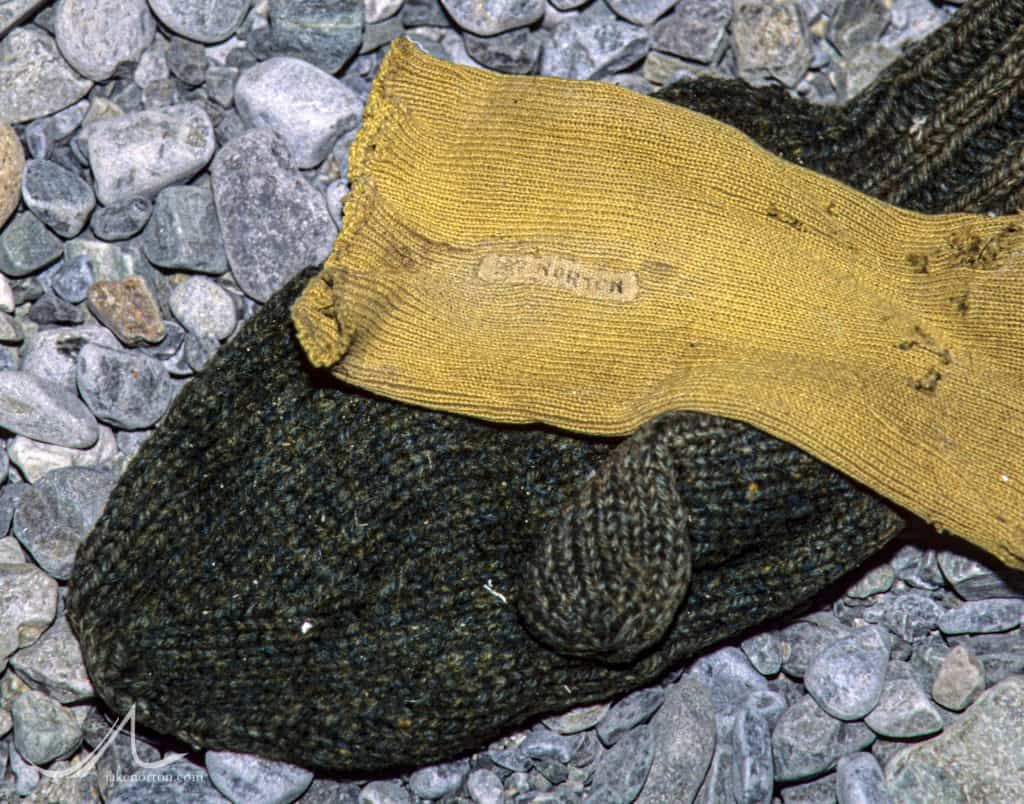
Ninety years ago today, on June 4, 1924, Norton and Somervell awoke to the dark and unforgiving cold of early morning at Camp VI on the North Ridge. Their hope for the day was to get an early start and climb to the summit without supplementary oxygen; both Norton and Somervell felt oxygen – especially with the primitive delivery system of 1924 – was an unneeded crutch, an ethical shortcoming, and simply not worth the weight and hassle. Their day quickly got off on the wrong foot, however, when Norton realized one of his thermos flasks of warm tea, which he slept with to keep from freezing, “had got rid of its cork, and its contents – no longer warm – had emptied into my bed.”
But, true to character, the two climbers rallied, fetched more snow to melt into water, and were off from Camp VI at 6:40am. (I’ve long wondered if the lone sock – marked with a tiny label reading “Norton” – I found in the remains of Camp VI in 2001 was a casualty of this thermos accident and abandoned by Norton in favor of a dry one.)
Along with oxygen, Norton and Somervell differed from George Mallory in choice of route. Rather than following the crest of the Northeast Ridge which Mallory advocated, Norton and Somervell viewed a traverse across the North Face and into the Great (Norton) Couloir as the better option. As Norton wrote in The Fight for Everest, 1924: “a feature on the skyline ridge which we called the second step…looked so formidable an obstacle where it crossed the ridge that we [chose] the lower route rather than try and surmount it at its highest point.” So, Norton and Somervell continued traversing the great North Face of Everest, following relatively easy terrain from the Northeast Shoulder. They hugged the base of the Yellow Band and found the early morning weather “fine and nearly windless” yet “bitterly cold”.
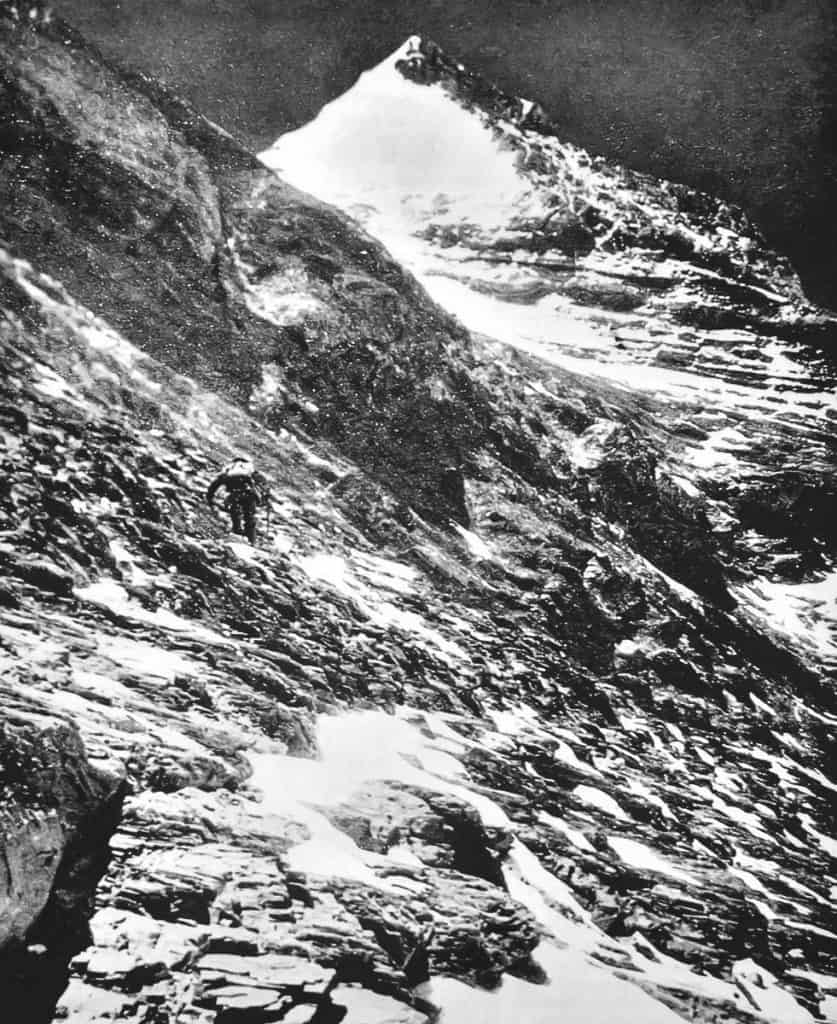
By midday, Somervell was overcome by the effects of his sore throat – exacerbated by the cold and extremely dry air of high altitude – and told Norton to continue along without him. Norton did so, following the contour of the lower Yellow Band. Norton describes the terrain: “From about the place where I met with these buttresses [coming down from the Second Step] the going became a great deal worse; the slope was very steep below me, the foothold ledges narrowed to a few inches in width, and as I approached the shelter of the big [Great] couloir there was a lot of powdery snow which concealed the precarious footholds…I had twice to retrace my steps and follow a different band of strata; the couloir itself was filled with powdery snow into which I sank to the knee or even to the waist, and which was yet not of a consistency to support me in the event of a slip. Beyond the couloir the going got steadily worse; I found myself stepping from tile to tile [of rock], as it were, each tile sloping smoothly and steeply downwards; I began to feel that I was too much dependent on the mere friction of a boot nail on the slabs. It was not exactly difficult going, but it was a dangerous place for a single unroped climber, as one slip would have sent me in all probability to the bottom of the mountain.”
Feeling he was stepping beyond his risk tolerance, Norton at this point decided – with a combination of disappointment and relief – to turn around and return to Somervell. While unsuccessful in reaching the summit, Norton’s climb was heroic, and record setting. His final altitude was roughly 28,126 feet, climbing in woolen knickers and a tweed coat and without oxygen. To give an idea of how remarkable this was, no one would climb higher than Norton without using oxygen until Reinhold Messner and Peter Habeler climbed Everest by the Southeast Ridge without oxygen in 1978.
Norton returned to Somervell, who was waiting in the same spot, the the duo began their long descent to Camp IV at the North Col. Along the way, Somervell continued to battle his worsening throat. As they hit the snowslopes of the North Ridge, he fell behind Norton who continued on unaware. Thirty minutes later, when the two rejoined, Somervell recounted coughing so badly he began to choke and quickly became fearful he would die; acting quickly, he gave himself a sort of Heimlich using his arms and a section of tent pole from Camp VI (he had dropped his ax down the North Face earlier in the day) and, as he said, proceeded to cough up the lining of his throat. After nightfall, Norton and Somervell approached the camp at the Col and, after shouting for some time, were greeted by Mallory and Noel Odell and escorted back to the tents.
And so ended the second – and perhaps best – attempt on Everest in 1924. And, if the above story hasn’t impressed and humbled you enough about the skill and strength of these climbers, take in another anecdote from Fight for Everest shared by Norton. Early in the day on June 4, as they left Camp VI, he found himself shivering so violently against the cold that he “suspected the approach of malaria”. He stopped quickly to take his pulse and “was surprised to find it only about sixty-four, which is some twenty above my normally very slow pulse.” Heartrate of 64 beats-per-minute, at over 27,000 feet, under exertion, in extreme cold, and without bottled oxygen.
Amazing.
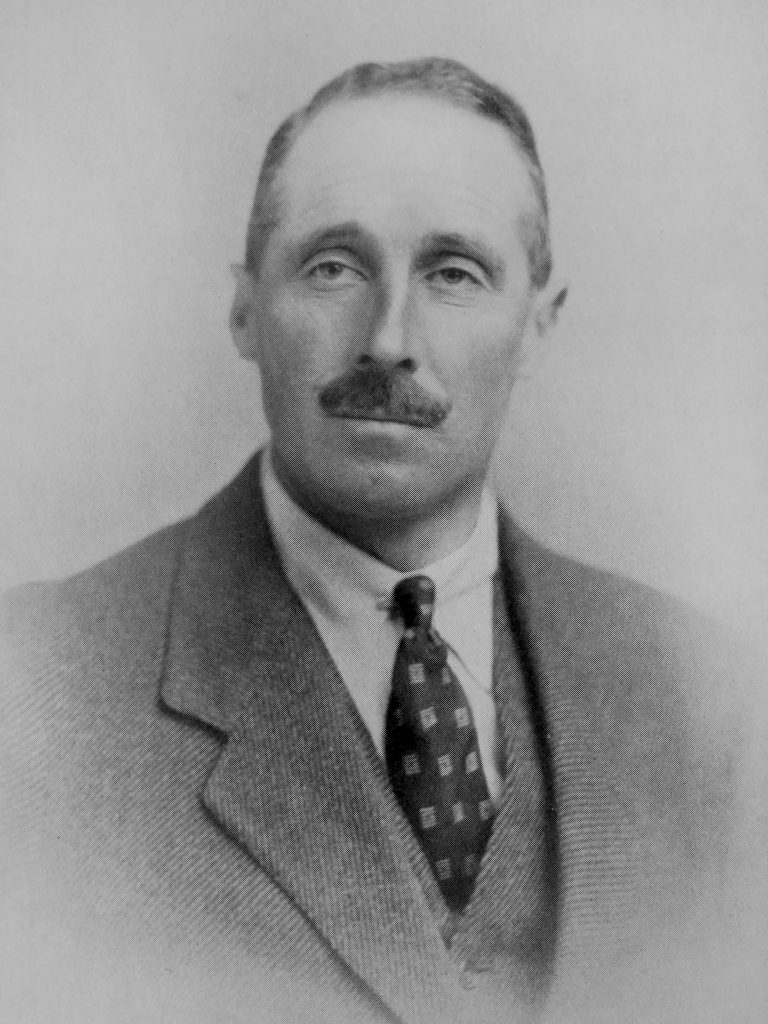
Colonel Edward “Teddy” Norton 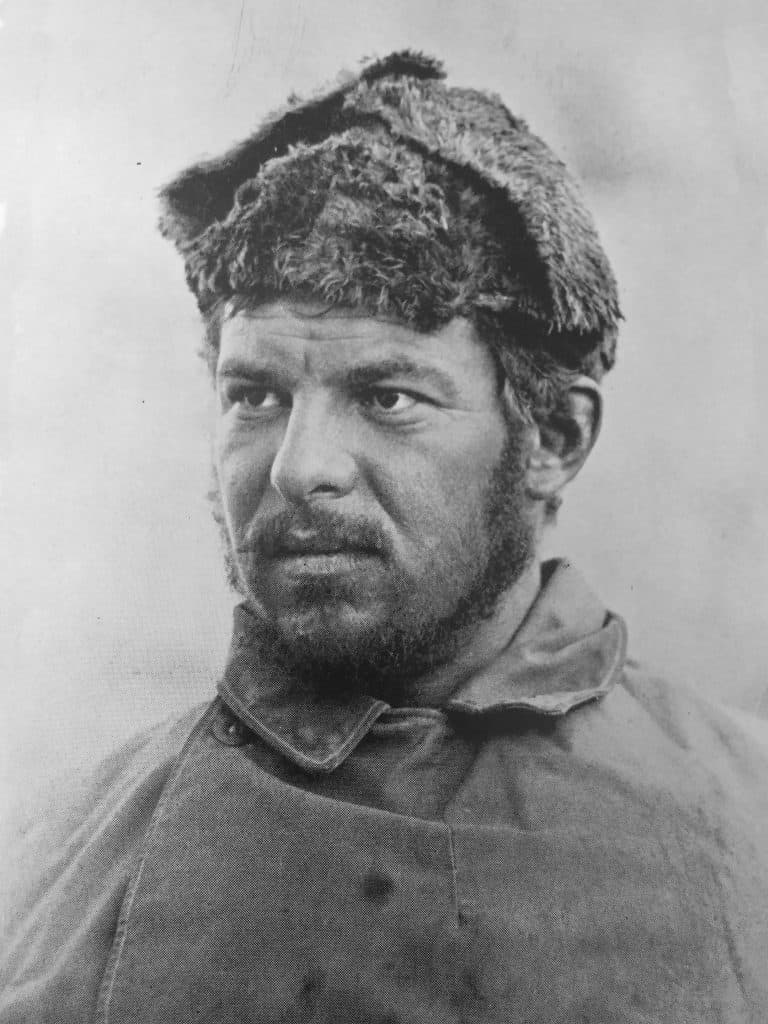
Howard Somervell
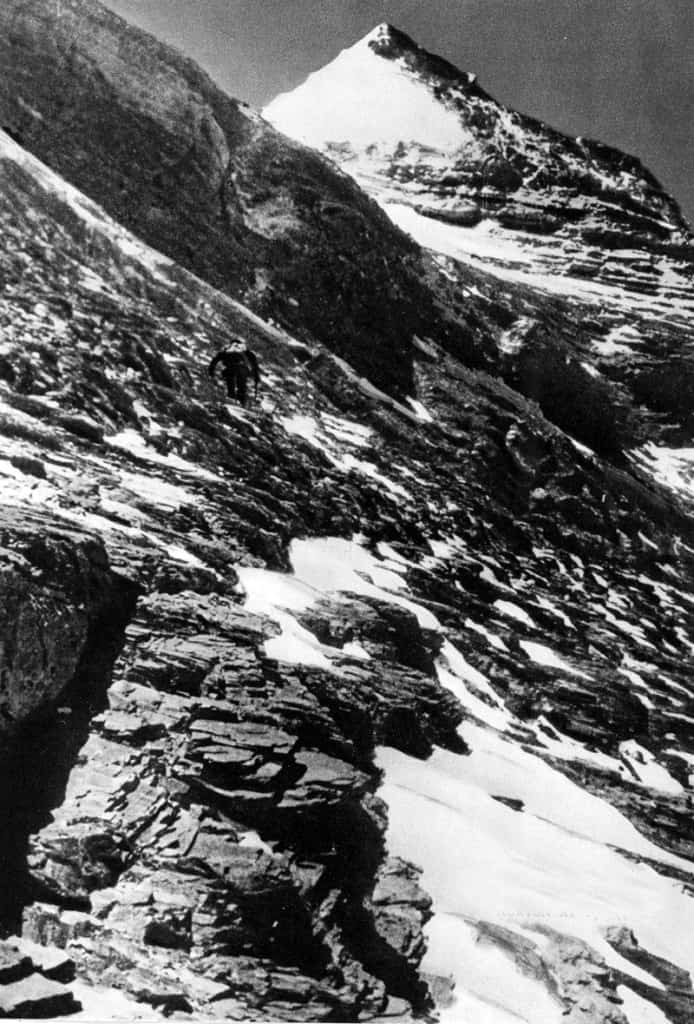


These were Iron Men, climbed with wool sweaters and canvas. This is truly Hair-raising, beyond the exposure 99.99% percent of Himalayan climber now.
Without doubt, Alexander. They were in a different league to say the least!
Perhaps one day there will be more of the complete collection of photograph's published of the 1922 & 1924 expeditions.
Thanks, Alexander. That would be great! I think a lot of the material is available online, but one never knows how much has been filed away and lost to time. Thanks, and be well.
Jake,I really enjoy reading what u have written..I read almost everything that can be found on internet about M&I..
To my knowledge Mallory never plan to go up to the ridge..
In his reports he never hinted that he will go up to ridge and that the second step was very difficult..
Do u think he followed N&S route ..?
And when M&I pass colouir,they directly broke out on the third step..(MAYBE EXACTLY WHAT ODELL SAW AT 12:50)
I mean,why try to climb via ridge where no one has ever been..?
Plus Mallory have information from Norton.. and I think Norton said to Mallory that it is feasible
Hi Vuk,
Thanks for your note and comment, and glad you've enjoyed the posts here. You are right in that Mallory never spoke specifically of his intent to climb the NE Ridge, but he likewise never spoke of his intent not to climb it, or to follow Norton & Somervell's route. It seems to me, and to many others, that presuming M&I following N&S's route basically implies disbelieving Odell's sighting, which I personally believe is true. I don't see the Third Step as fitting into Odell's description very well, personally.
As for climbing the ridge, well, Norton tried the Couloir and could not climb it. Mallory had studied the Ridge over three expeditions, indicating in '22 and '23 that it seemed possible. As a climber myself, after hearing that Norton was in deep snow on precarious rock and was forced to turn around, I would likely opt for the unknown on the Ridge rather than repeat a dead end run. But, that said, there is so much we still don't know. If you haven't already, I'd highly recommend you read the great article by Darren Wisniewski that he posted here on my community forum; you'll need to register with your email to access it, but it just takes a second. I think you'll enjoy it.
Thanks again, and be well!
[…] happened just before Mallory and Irvine’s disappearance. It was June 4, 1924, when two climbers - Teddy Norton and Howard Somervell - moved slowly across the mighty North Face of Everest. They were aiming for the Great (now Norton) […]
[…] Northeast Ridge and North Face. It would of course also provide a view of the distant figures of Teddy Norton and Howard Somervell, George Mallory and Andrew Irvine, as they made their summit attempts on June 4 and June 8, 1924, […]
[…] Andrew Irvine came into play. On May 27, as the team prepared to launch the first summit attempt of Teddy Norton and Howard Somervell, they chose at Camp II the “Tigers,” the porters “on whom now all our hopes centred,” as […]
[…] won’t go into all the details here as I’ve written about it quite a bit in the past (see Everest 1924: Norton & Somervell's Record Attempt). In a nutshell, Norton and Somervell set off from Camp VI on the morning of June 4, angling across […]
In case you're interested, and not aware, Edward Norton's biography, written by one of his sons, Hugh Norton, was published in 2017 and makes fascinating reading. 'Norton of Everest'; Vertebrate Publishing, UK (v-publishing.co.uk).
Thanks, Chris! I have the book, but haven't (yet) read it completely. Will do so!
I have been impressed by your writings about Mallory and Irvine and obviously your first hand knowledge of the mountain. I recently read Conrad Ankers book second death of Mallory which was underwhelming when it came to Mallory. His rather tedious ramblings about Mallory's welsh mountain climbing credentials in comparing his skill levels to climbing on mount Everest bely belief. He was the only member to have been on all 3 expeditions. His climbing ability is without doubt off the chart. None of the current mountaineers know what he was capable of of, but the present clique if mountain experts who are dwarfed by his legend rather tacitly write off his having submitted!!! There is no evidence to the contrary,very little of his climbing gear has ever been found bar the ice axe which many tales are invented, he was too driven t wear himself out with the second step. Would it not be more probable they climbed the first step when spotted then circled around the second step and followed the Norton couloir as Mesner dud subsequently. Obviously this was his last chance d ho think! He would give up and retire down the mountain unsuccessful. It's better to have died tying, then not try at all. He had become swallowed up by Everest and pushed by the Alpine club and sundry he had n way out. He didn't want t go the third time, but was thrust onward by his mountaineering buddies etc. so why cannot his achievement be left open! If he'd had Common sense he would not have made the second attempt, let alone take Irvine and try with oxygen fir the first time. He was stronger without and acclimatised. Here endedt my rant, all the best.Ian
Mallory never, ever once "advocated" for the crest of the ridge and strongly spoke against going anywhere near the second step, calling it 'iimpossible" and saying technical climbing at 2800 feet was crazy and dangerous. He instructed Noel the night before to look for him near the coulior. Why are you saying differently?
Addendum
To reiterate. I don't know why modern climbers are super imposing different definitions to what Mallory said than what he and others meant back then. The term second step was never used in Mallory's lifetime and only came into usage after he was dead.
Mallory wrote to Noel **the night before** (which I'm sure you know) "“It won’t be too early to start looking for us either crossing the rock band under the pyramid or going up skyline at 8.0 p.m. [sic]”
The note was to confirm time as Mallory and Noel had an extensive discussion about his plans on the 6th.
Noel was up at the North Col that day and states in his book Through Tibet to Everest that “[w]hen the time came for [Mallory] to make that great climb from which he never returned he discussed his route **minutely with me**, and told me where to look for him with my telephoto lens on the final pyramid.”
“Mallory told me himself, when he talked to me of his possible routes up the final pyramid and told me where to watch for him, that he expected to go up the North-East Ridge of the final pyramid, but if he found the gully particularly difficult or if the west wind were particularly bad he would take the Eastern Ridge, missing the gully by passing across the head of it and gaining better protection from the west wind. Such a route would bring him along the knife-edge of the Eastern Ridge. This ridge is corniced by the continual action of the west wind.” (p. 275).
The "North East Ridge" in 1924 was the ridge running up from the couloir. The "Eastern ridge" is the modern route along the crest ( first two steps). If Mallory had changed his mind, he would have said in the note "change of plans". The note was for time. the location had been agreed upon.
Why do people not understand Mallory was vehemently adamant about avoiding the second step, wrote about staying away from it constantly? Why do people super impose thoughts on Mallory he never directly expressed?
Here is a really good article by Robert Edwards suggesting what the terms and Mallory meant at that time.
https://medium.com/@robert.edwards_87384/mallory-irvine-everest-the-rock-band-8a7005a447fb